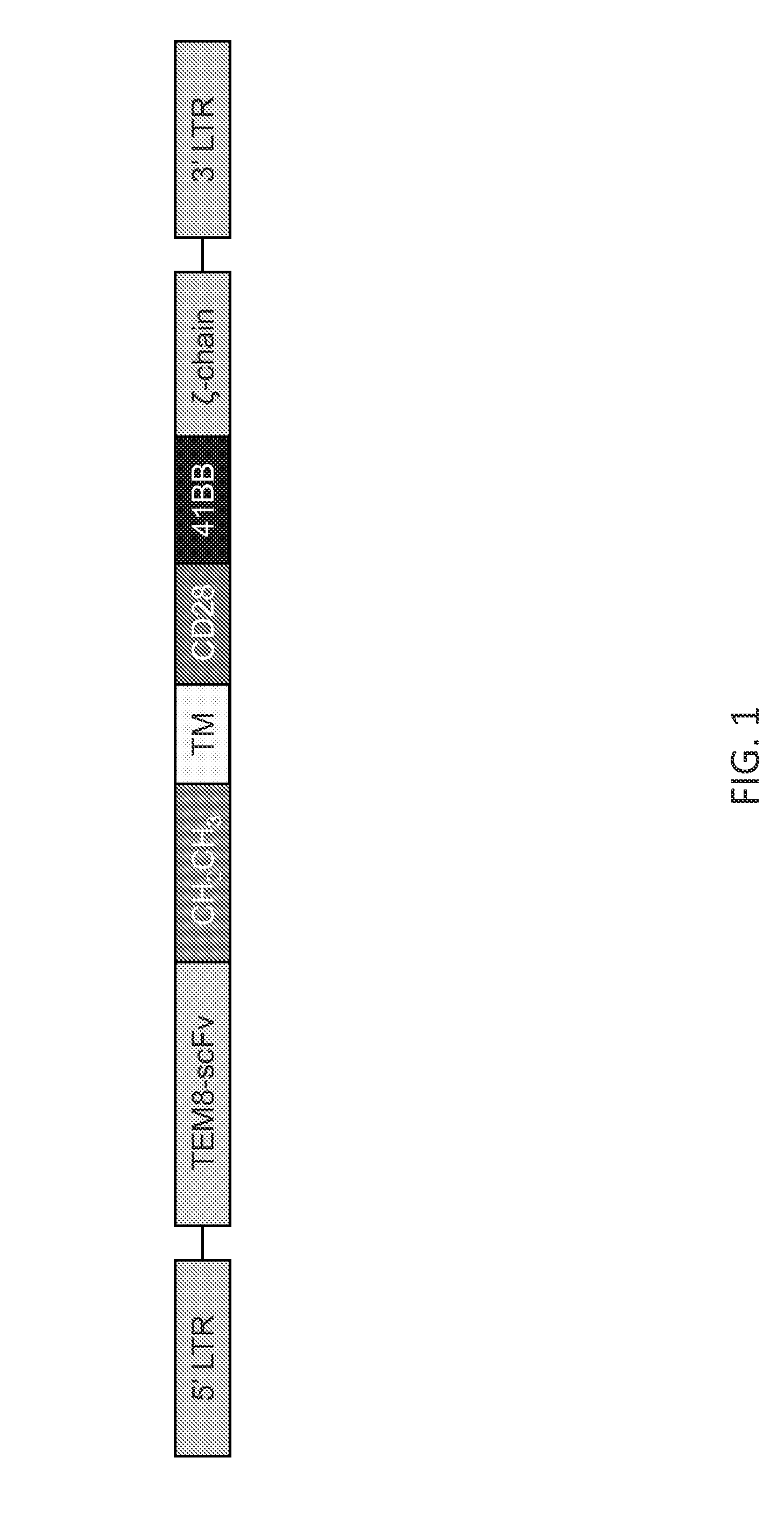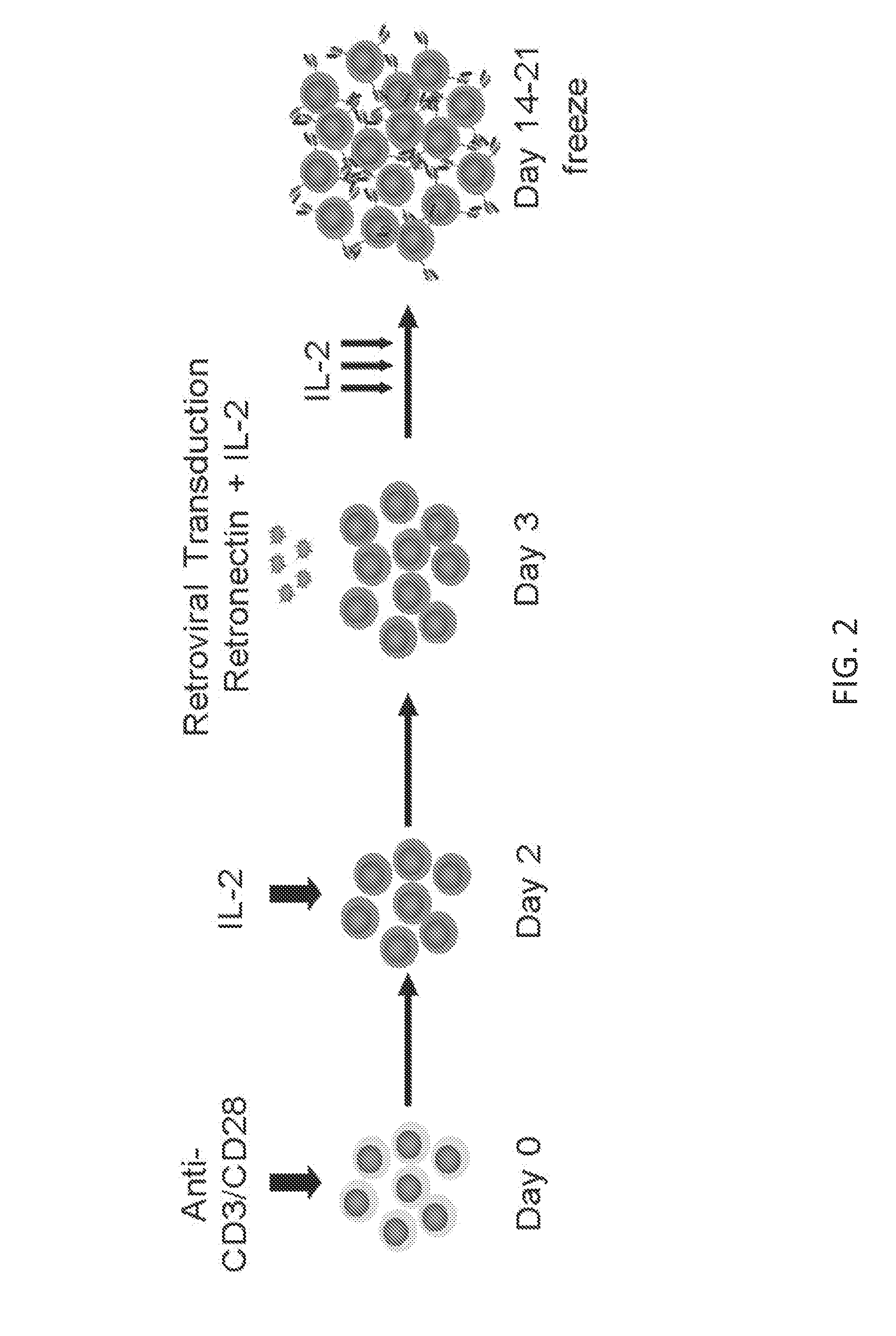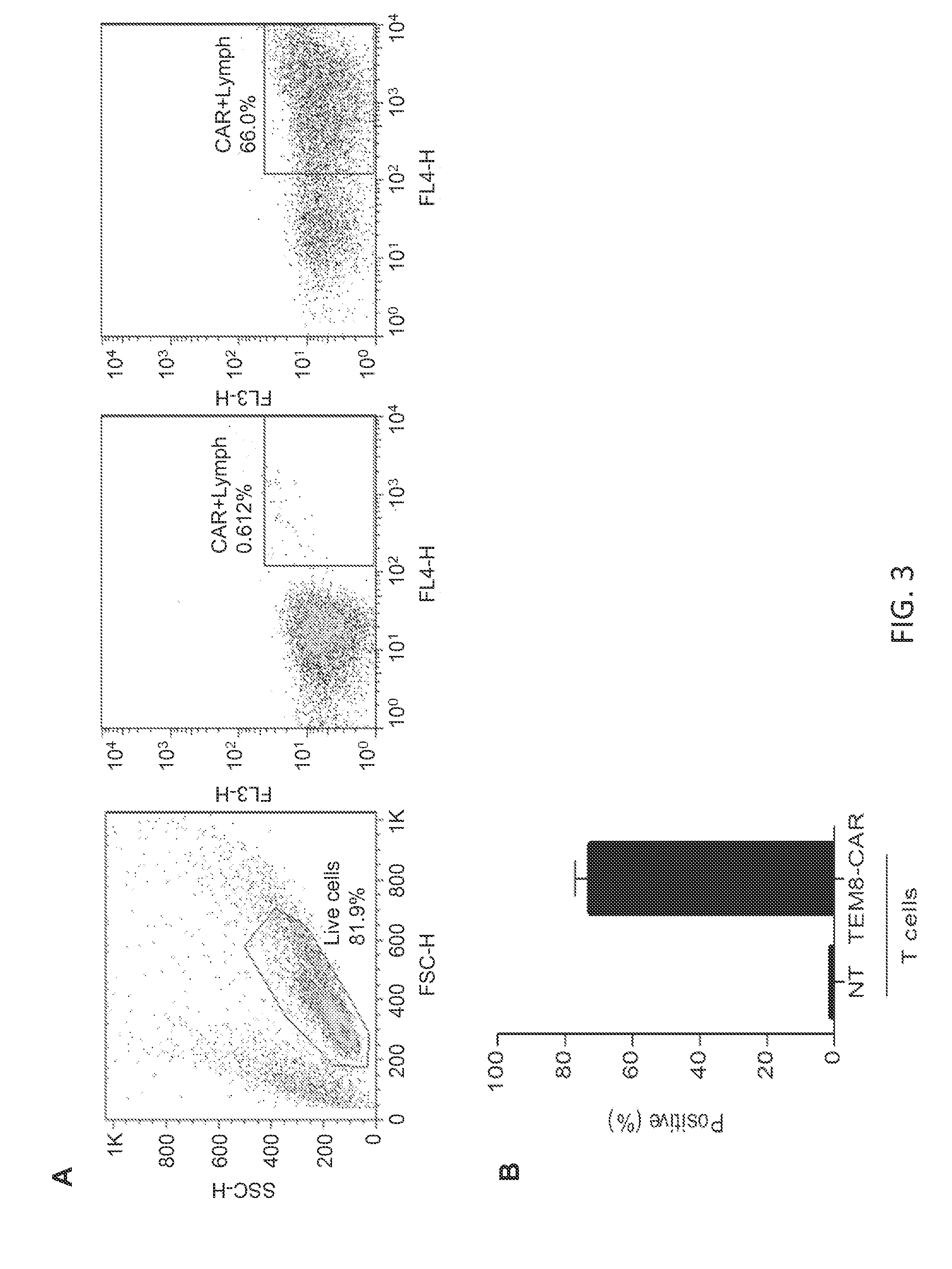Vascular-targeted t-cell therapy
a t-cell and targeted technology, applied in the field of vascular-targeted t-cell therapy, can solve the problems of vessel thrombosis and lack of efficacy, and achieve the effect of enhancing the in vivo antitumor activity of therapies
- Summary
- Abstract
- Description
- Claims
- Application Information
AI Technical Summary
Benefits of technology
Problems solved by technology
Method used
Image
Examples
example 1
General Embodiments
[0193]CARs were designed that are specific for TEM1 and TEM8, two antigens that are preferentially expressed in the tumor vasculature. Specifically, CARs were constructed based on published sequences of TEM1- and TEM8-specific monoclonal antibodies. TEM1- and TEM8-specific T cells were generated by retroviral transduction, and the inventors have shown that TEM1- and TEM8-specific CAR T cells recognize TEM1- or TEM8-positive target cells:
[0194]T cells expressing TEM1-specific CARs recognize TEM1-positive cancer cells. TEM1-specific CAR T cells (TEM1-CAR T cells) were co-cultured with TEM1-positive (HOS) and TEM1-negative (293T) target cells. After 24 hours media was collected for analysis. TEM1-CAR T cells recognized HOS cells in contrast to 293T cells as judged by the production of the proinflammatory cytokine IFNγ and IL-2 (FIG. 10).
[0195]T cells expressing TEM8-specific CARs recognize TEM1-positive cancer cells. TEM8-specific CAR T cells (TEM8-CAR T cells) were ...
example 2
TEM1-Specific T Cells
[0197]TEM1-specific T cells have been generated. FIG. 8 illustrates an exemplary TEM1-specific CAR and FIG. 2 is an exemplary method for generating TEM1-specific T cells. FIG. 9 demonstrates that TEM1-specific T cells produce IFN-γ and IL-2. FIG. 10 shows that TEM1-specific T cells kill TEM1-positive target cells in vitro.
example 3
Generation of TEM1- and TEM8-Specific CAR T Cells
[0198]Adoptive T cell therapy is a tumor specific therapy in which blood is drawn from the patient, followed by isolation of their T cells. Their T cells are then engineered to be tumor specific and delivered back into the patient. T cells can be engineered to be tumor-specific by modifying the T cell to express a chimeric antigen receptor. CAR T cells combine the antigen-binding property of monoclonal antibodies with the signaling capacity and self-renewal of T cells. CAR-expressing T cells recognize and kill tumor cells in an MHC-unrestricted modality, so that target cell recognition by CAR-T cells is unaffected by some of the major mechanisms by which tumors avoid MHC-restricted T cell recognition.
[0199]In certain aspects, generation of CAR T cells may begin with the isolation of PBMCs or peripheral blood mononuclear cells from healthy donors and the addition of CD3 / CD28 antibodies. IL2 is added to the OKT3 / CD28 blasts to activate ...
PUM
| Property | Measurement | Unit |
|---|---|---|
| Diameter | aaaaa | aaaaa |
Abstract
Description
Claims
Application Information
 Login to View More
Login to View More - R&D
- Intellectual Property
- Life Sciences
- Materials
- Tech Scout
- Unparalleled Data Quality
- Higher Quality Content
- 60% Fewer Hallucinations
Browse by: Latest US Patents, China's latest patents, Technical Efficacy Thesaurus, Application Domain, Technology Topic, Popular Technical Reports.
© 2025 PatSnap. All rights reserved.Legal|Privacy policy|Modern Slavery Act Transparency Statement|Sitemap|About US| Contact US: help@patsnap.com



